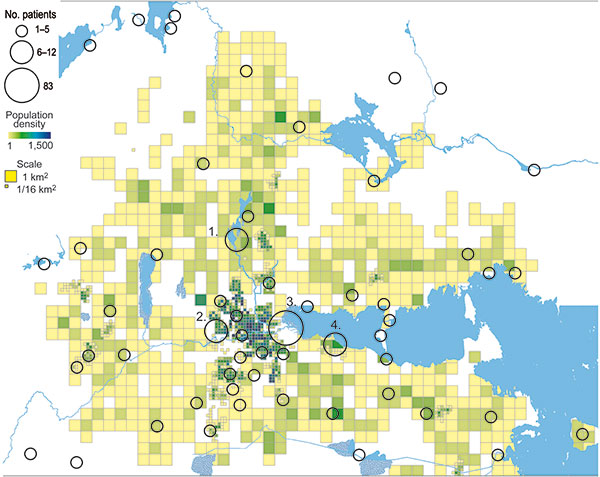Volume 15, Number 12—December 2009
Research
Landscape Epidemiology of Tularemia Outbreaks in Sweden
Figure 3

Figure 3. Geographic distribution of 202/240 places of tularemia transmission in Örebro, Sweden, 2000–2004. Four recreational areas were disease cluster sites for tularemia transmission: 1) Lake Lången, 2) Karslundsskogen/Hästhagen, 3) Oset/Rynningevikens nature reserve, and 4) Ekeby-Almby.
Page created: December 09, 2010
Page updated: December 09, 2010
Page reviewed: December 09, 2010
The conclusions, findings, and opinions expressed by authors contributing to this journal do not necessarily reflect the official position of the U.S. Department of Health and Human Services, the Public Health Service, the Centers for Disease Control and Prevention, or the authors' affiliated institutions. Use of trade names is for identification only and does not imply endorsement by any of the groups named above.